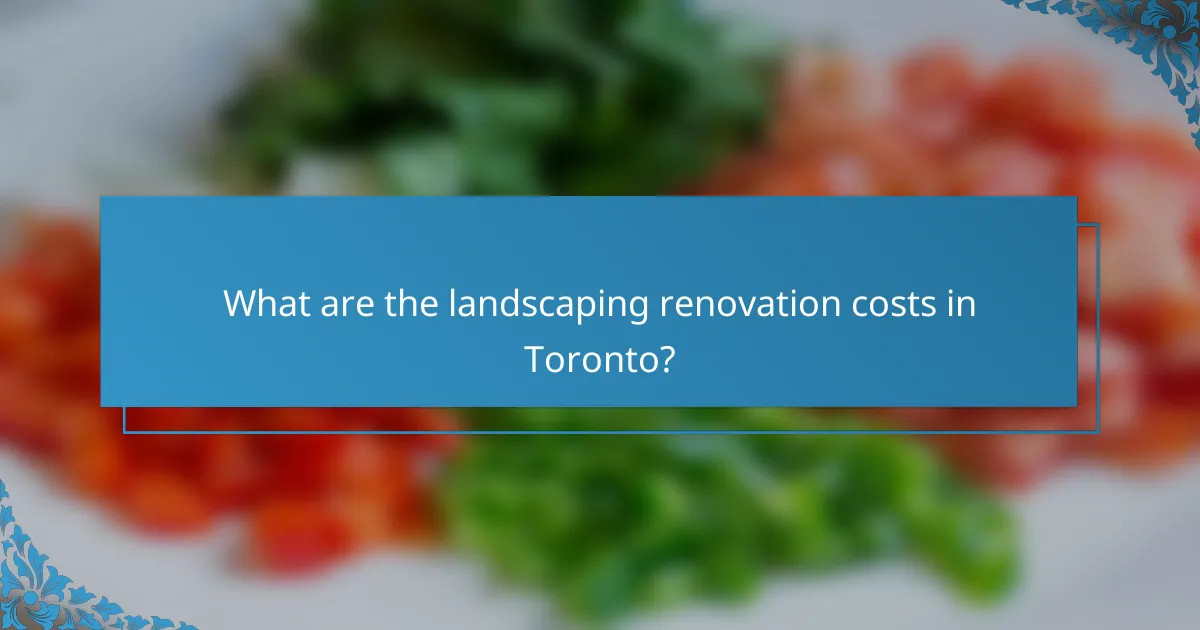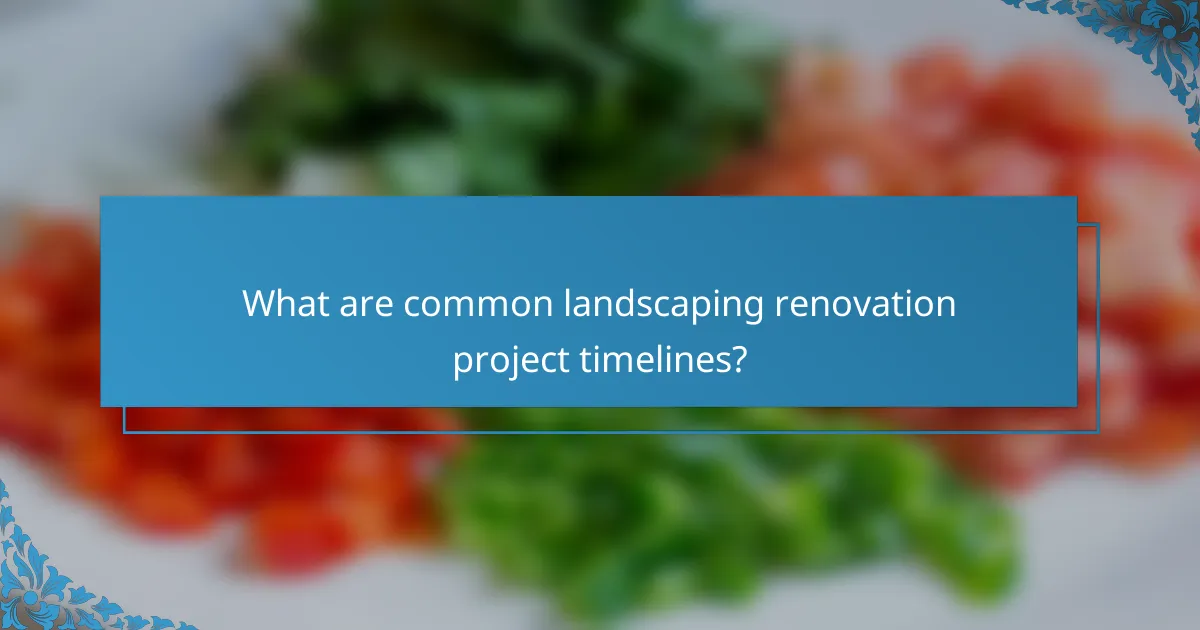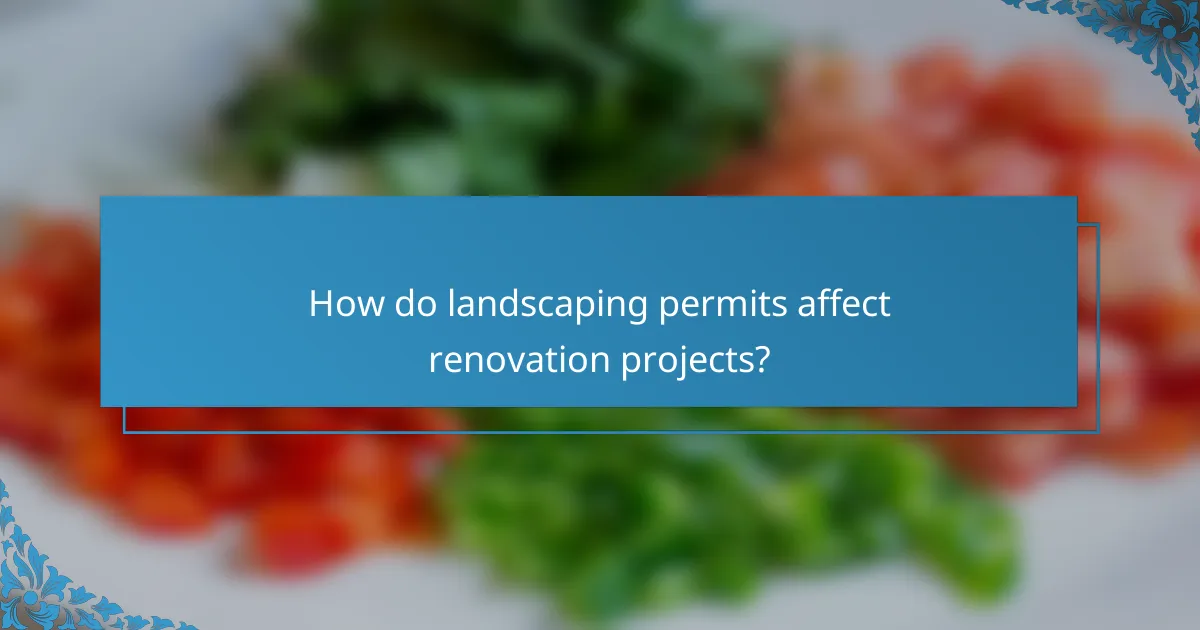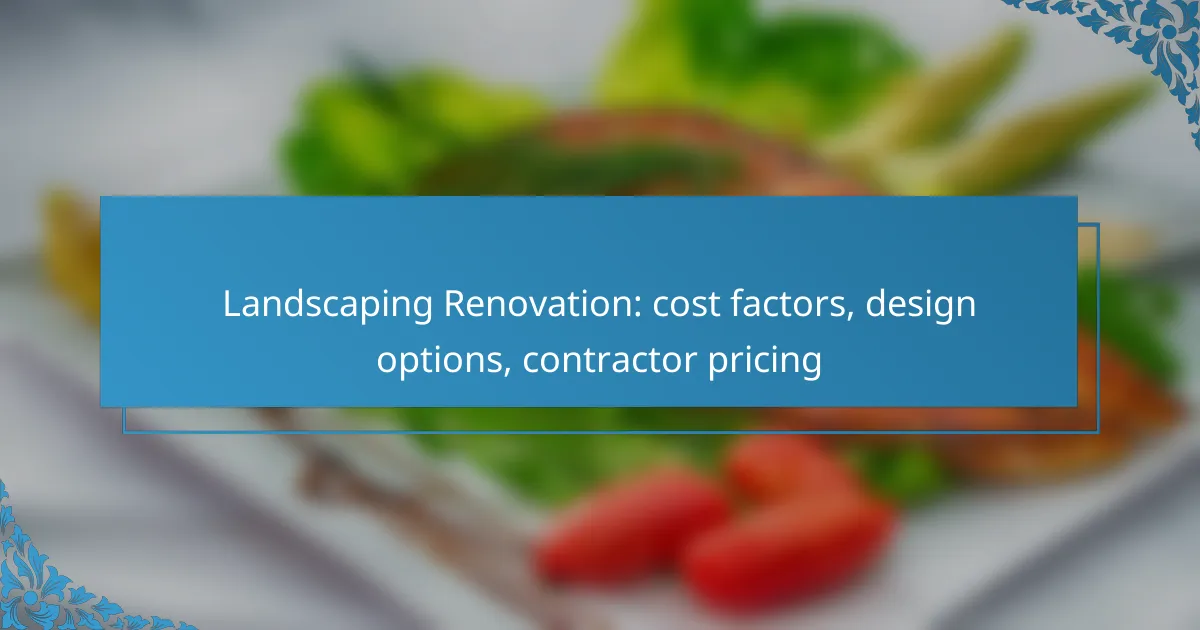Landscaping renovation costs in Toronto can vary widely, influenced by project scope, materials, and labor, with homeowners typically spending between CAD 10 to CAD 30 per square foot. Various design options, such as hardscaping, softscaping, and sustainable solutions, can enhance both the beauty and functionality of outdoor spaces. When selecting a contractor, it’s crucial to assess their experience and reputation to ensure they can meet your design needs while adhering to your budget.

What are the landscaping renovation costs in Toronto?
Landscaping renovation costs in Toronto can vary significantly based on the scope of the project, materials used, and labor involved. On average, homeowners can expect to spend anywhere from CAD 10 to CAD 30 per square foot for comprehensive landscaping services.
Average cost per square foot
The average cost per square foot for landscaping renovations in Toronto typically ranges from CAD 10 to CAD 30. This figure can fluctuate based on the complexity of the design and the materials selected. For instance, basic lawn installation may cost less, while intricate designs with hardscaping elements can push the price higher.
For a standard residential yard of about 1,000 square feet, homeowners might budget between CAD 10,000 and CAD 30,000, depending on their specific needs and preferences.
Factors affecting pricing
Labor costs in Toronto can vary, with skilled contractors typically charging higher rates. It’s advisable to obtain multiple quotes to compare prices and services offered by different contractors.
Seasonal pricing variations

What design options are available for landscaping renovations?
Landscaping renovations offer a variety of design options that can enhance both aesthetics and functionality. Key choices include hardscaping, softscaping, and sustainable designs, each with unique benefits and considerations.
Hardscaping options
Hardscaping refers to the non-plant elements of landscaping, such as patios, walkways, retaining walls, and driveways. These features provide structure and can significantly improve the usability of outdoor spaces. Common materials include concrete, brick, stone, and pavers.
When considering hardscaping, think about the layout and flow of your outdoor area. For example, a well-placed patio can create an inviting outdoor living space, while a retaining wall can manage soil erosion. Costs for hardscaping can vary widely, typically ranging from $15 to $50 per square foot, depending on materials and complexity.
Softscaping options
Softscaping encompasses the living elements of landscaping, such as plants, trees, shrubs, and flowers. This aspect adds color, texture, and life to your outdoor environment. Selecting the right plants involves considering climate, soil type, and maintenance requirements.
To create a balanced landscape, mix perennials and annuals for year-round interest. Incorporating native plants can reduce maintenance and water usage. Budgeting for softscaping typically ranges from $5 to $20 per square foot, influenced by plant selection and installation costs.
Sustainable landscaping designs
Sustainable landscaping designs focus on environmental responsibility and resource conservation. This approach includes using native plants, implementing rain gardens, and installing permeable paving to manage stormwater. These designs aim to minimize ecological impact while enhancing beauty.
When planning a sustainable landscape, consider incorporating features like composting areas, xeriscaping, and efficient irrigation systems. These elements can lead to long-term savings on water and maintenance. The initial investment may be higher, but the benefits often outweigh the costs over time, promoting a healthier ecosystem and reducing utility bills.

How to choose a landscaping contractor in Ontario?
Choosing a landscaping contractor in Ontario involves evaluating their experience, qualifications, and reputation. It’s essential to select someone who understands local regulations and can deliver the design you envision within your budget.
Key qualifications to look for
When selecting a landscaping contractor, prioritize their certifications and experience. Look for professionals who are licensed and insured, which protects you from liability in case of accidents. Additionally, check if they have specific training in landscape design or horticulture.
Experience in local projects is crucial, as it indicates familiarity with Ontario’s climate and soil conditions. A contractor with a strong portfolio of completed projects can give you confidence in their abilities.
Questions to ask potential contractors
Before hiring, ask potential contractors about their process and timeline. Inquire how they handle project changes and what their payment structure looks like. Understanding these details will help you gauge their professionalism and reliability.
Additionally, ask for a detailed estimate that outlines costs for materials and labor. This transparency will help you avoid unexpected expenses and ensure the project stays within your budget.
Reviews and references importance
Reviews and references are vital when assessing a landscaping contractor’s credibility. Look for online reviews on platforms like Google or Yelp to see past clients’ experiences. Positive feedback can indicate a contractor’s reliability and quality of work.
Request references directly from the contractor and contact them to discuss their experiences. Ask about the contractor’s communication, adherence to timelines, and overall satisfaction with the completed project. This firsthand information can significantly influence your decision.

What are common landscaping renovation project timelines?
Landscaping renovation project timelines can vary significantly based on the scope and complexity of the work. Generally, projects can take anywhere from a few days to several weeks, depending on factors such as design choices, site conditions, and contractor availability.
Typical project duration
Most landscaping renovations typically last between one to four weeks. Smaller projects, like planting new flower beds or installing sod, may only require a few days. More extensive renovations, such as hardscaping or complete yard redesigns, can take longer, often extending to several weeks.
Factors influencing timelines
Several factors can influence the duration of landscaping renovations. The size of the area being renovated, the complexity of the design, and the materials chosen all play a significant role. Additionally, contractor scheduling and labor availability can impact how quickly a project can be completed.
Weather conditions can also affect timelines. Rain or extreme temperatures may delay work, so it’s essential to consider the local climate when planning your renovation.
Seasonal considerations
Seasonality significantly impacts landscaping renovation timelines. Spring and early fall are typically the best times for planting, as temperatures are mild and rainfall is more consistent. However, these seasons are also peak times for contractors, which may lead to longer wait times for scheduling.
In contrast, summer renovations can be challenging due to heat and drought conditions, while winter projects may be limited by frozen ground or snow. Planning your project during optimal seasons can help ensure timely completion and better plant establishment.

How do landscaping permits affect renovation projects?
Landscaping permits are essential for ensuring that renovation projects comply with local regulations and zoning laws. Obtaining the necessary permits can prevent costly fines and delays, making it crucial to understand their impact on your project.
Common permits required in Ontario
In Ontario, several permits may be required for landscaping renovations, depending on the scope of the project. Common permits include building permits for structures like decks or fences, grading permits for significant land alterations, and tree removal permits if you plan to remove any protected trees.
It’s advisable to check with your local municipality to determine specific requirements, as regulations can vary significantly across different regions. Always ensure that you have the correct permits before starting work to avoid complications.
Application process overview
The application process for landscaping permits typically begins with submitting a detailed plan of your project to the local planning department. This plan should include site drawings, descriptions of the work to be done, and any other required documentation.
After submission, the municipality will review your application, which may involve public consultations or inspections. The processing time can vary, so it’s wise to apply well in advance of your planned start date, often several weeks to a few months ahead.
Consequences of not obtaining permits
Failing to obtain the necessary landscaping permits can lead to serious consequences, including hefty fines and the requirement to undo completed work. Municipalities may issue stop-work orders, halting your project until compliance is achieved.
Additionally, not having permits can complicate future property transactions, as buyers often request documentation of all renovations. To avoid these pitfalls, always prioritize obtaining the required permits before commencing any landscaping work.
